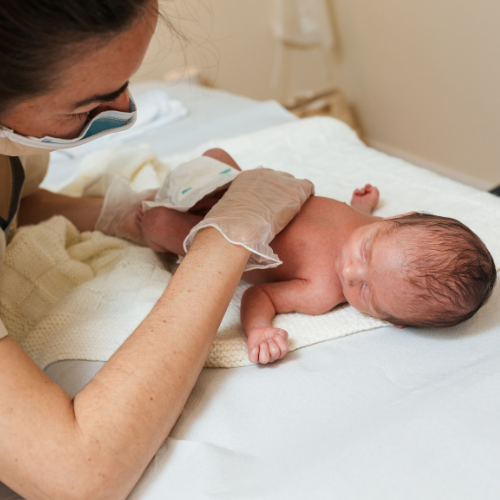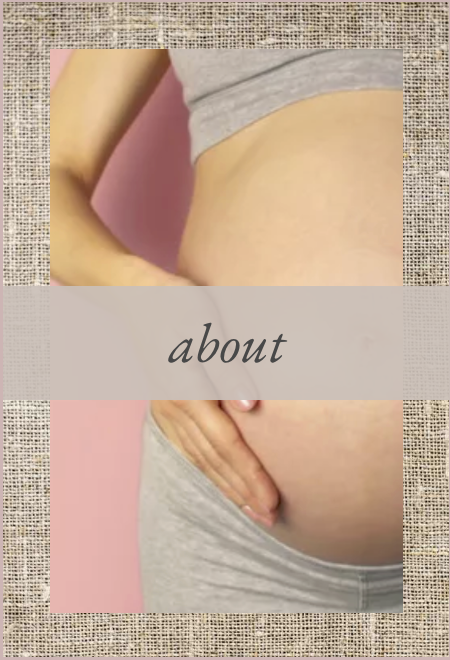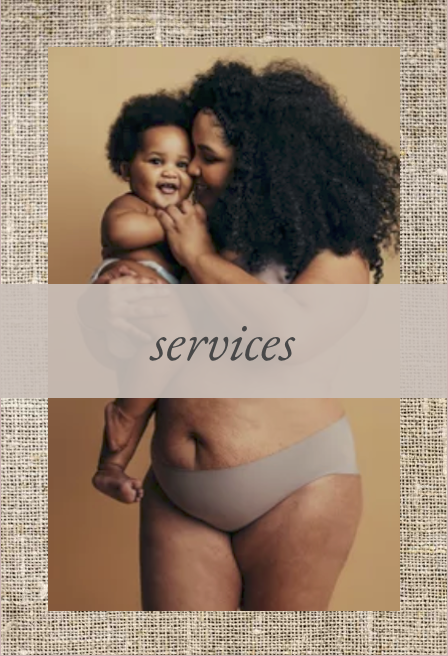Kim@BirthingDays.com | 541-733-4002
Everything you need to know to make confident decisions for your baby in those first precious hours.
Why Newborn Procedures Matter
When planning for your birth, it’s natural to focus on your labor and delivery preferences—but there’s a whole set of decisions waiting for you after your baby is born. These are called newborn procedures: standard practices hospitals and birth centers often perform in the hours following birth. While some of these are lifesaving, others can be delayed, modified, or even declined depending on your circumstances.
By understanding what each newborn procedure is, why it’s done, and possible alternatives, you’ll be able to make confident, informed choices that align with your family’s values.
This guide walks you through:
- What each procedure is
- Why it’s done
- Potential concerns
- Evidence-based, natural-minded options
| Procedure | Purpose | Possible Concerns | Natural / Alternative Options |
|---|---|---|---|
| Antibiotic Eye Ointment | Prevents eye infection from gonorrhea or chlamydia | May be unnecessary if mother tests negative; can cause blurred vision | Decline if low risk; delay until after bonding |
| Vitamin K Injection | Prevents rare but serious bleeding (VKDB) | High dose, preservatives, possible allergic reaction | Oral vitamin K regimen; boost maternal intake; risk-based approach |
| Cord Clamping Timing | Transfers blood, oxygen, and nutrients to baby | Slight increase in jaundice risk (usually mild) | Delay 3–5 minutes, until cord stops pulsating, or after placenta delivery |
| First Bath | Cleans baby, removes vernix | Removes protective vernix, may chill baby | Delay 24–48 hours or longer; use warm water only |
| Circumcision | Cultural, religious, or perceived hygiene | Pain, loss of protective foreskin tissue | Delay decision; intact care education |
| Hepatitis B Vaccine | Protects against hepatitis B virus | Not always necessary at birth if low risk | Delay until pediatric visit if desired |
Detailed Guide to Newborn Procedures
Antibiotic Eye Ointment
Shortly after birth, many babies are given erythromycin antibiotic eye ointment to prevent blindness caused by gonorrhea or chlamydia infections passed during delivery. While this is important if a parent is infected, the procedure is often done routinely—even if the mother tested negative for these infections during pregnancy.
The ointment can cause temporary blurred vision, which may interfere with early bonding and breastfeeding. If you have tested negative and are in a mutually monogamous relationship, you may decide the risk is low enough to decline this intervention. Another option is to request delayed administration, giving you and your baby uninterrupted time for skin-to-skin and eye contact right after birth. If you do test positive for gonorrhea or chlamydia, it’s best to accept the ointment while also receiving treatment during pregnancy.
For more details, see The Evidence on: Erythromycin Eye Ointment for Newborns.
Vitamin K Injection
Vitamin K is essential for healthy blood clotting. Newborns naturally have very low vitamin K levels, which increases the risk of Vitamin K Deficiency Bleeding (VKDB)—a rare but dangerous condition that can occur in the first weeks of life. To prevent VKDB, hospitals recommend a single injection of synthetic vitamin K in the thigh within hours of birth.
Some parents have concerns about the high dosage, preservatives in the injection, or the fact that it’s a synthetic form. An alternative is oral vitamin K supplementation, which is effective when given consistently over several weeks or months. Breastfeeding mothers can also boost their own vitamin K intake through diet or supplements, which slightly increases the vitamin K content in breast milk. If your baby’s birth is traumatic (such as the use of forceps or vacuum extraction) or if you plan to circumcise, the shot may be especially important, as these situations carry a higher bleeding risk.
Learn more from the American Academy of Pediatrics’ statement on Vitamin K prophylaxis.
Cord Clamping Timing
Cord clamping refers to when the umbilical cord is cut after birth. In the past, early cord clamping—within seconds after birth—was standard practice. Today, research shows delayed cord clamping offers significant benefits, including higher iron stores, better oxygenation, and increased blood volume for your baby.
Most experts recommend delaying cord clamping for at least 1–3 minutes, though many parents choose to wait until the cord stops pulsating or even until the placenta is delivered. The main concern is a slightly increased chance of jaundice, but in most healthy babies, this jaundice is mild and resolves without issue. Including your preferred cord clamping timing in your birth plan ensures your wishes are honored in the delivery room.
The World Health Organization recommends delayed clamping to improve newborn outcomes. Read more on their official guidance.
Baby’s First Bath
In many hospitals, nurses bathe newborns within a few hours of birth. This is often done to remove blood, amniotic fluid, and vernix—the creamy, white substance that coats a newborn’s skin. However, vernix has protective benefits: it’s a natural moisturizer, helps regulate temperature, and even has antimicrobial properties.
Early bathing can remove this protective layer, disrupt bonding, and cause your baby’s temperature to drop. Many families now choose to delay the first bath for 24–48 hours, or even up to a week. When you do bathe your baby, you can simply use warm water and skip soap unless necessary. If you want to bathe your baby in the hospital, consider bringing your own gentle, fragrance-free cleanser.
Midwives often recommend leaving vernix intact for its benefits. Learn more about vernix from the National Library of Medicine.
Circumcision
Circumcision is the surgical removal of the foreskin from a newborn boy’s penis. In the United States, this procedure is often performed for cultural, religious, or perceived health reasons. While some studies suggest circumcision can reduce the risk of certain infections, the American Medical Association classifies it as non-therapeutic, meaning it’s not medically necessary for healthy infants.
The foreskin is a normal, functional part of the body, providing protection and sensitivity. Risks of circumcision include pain, bleeding, and possible complications. Many parents choose to delay the decision, allowing their son to choose later in life. Caring for an intact penis is simple—just wash the outside like any other part of the body, without retracting the foreskin in infancy or childhood.
For balanced information, visit Mayo Clinic.
Hepatitis B Vaccine at Birth
The hepatitis B vaccine protects against a serious viral infection that can damage the liver. It’s routinely offered within 24 hours of birth. If a mother is infected with hepatitis B, the vaccine is essential to protect the baby. However, for low-risk families, some parents choose to delay the vaccine until a later pediatric appointment. Always discuss timing and risk factors with your provider.
The CDC provides detailed recommendations here: Hepatitis B vaccination.
Making Newborn Procedure Decisions
It’s important to remember that every newborn procedure has a purpose, but the timing, method, and necessity can vary based on your circumstances. To ensure your wishes are respected:
- Research each procedure before birth
- Include your preferences in your birth plan under a “Newborn Care” section
- Share your plan with your care team ahead of time
- Have your partner or doula advocate for your choices during and after birth
Final Thoughts
Your baby’s first hours are filled with incredible changes—and important decisions. By learning about newborn procedures now, you’ll feel more prepared, confident, and empowered to choose what’s right for your family. Whether you accept every procedure immediately, delay some, or opt for natural alternatives, the most important thing is that the decision is yours.
We can discuss these procedures and more in a private childbirth class. Schedule your class today.




